Question and Answer – December 2011
If you’d like Neil’s help with your plant question, all he asks is that you accompany the question with a photo, since this is a visual publication. Don’t have a photo? Neil invites you to contact him via his radio programs and newspaper columns. Click here to send him your photo and question.
Question: What would cause pear trees to bloom in the fall? No name given. Grand Prairie.
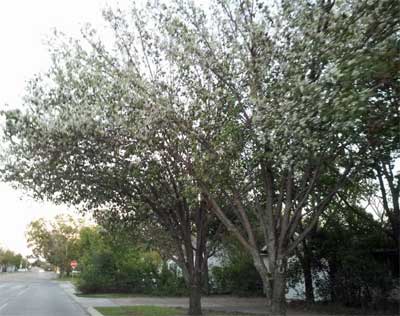
Answer: Plants that traditionally bloom in the spring sometimes have a second flowering in fall, especially if the summer is hot and foreboding. This year certainly qualified. The plants go dormant in the summer, and flowering is their reaction to breaking dormancy. You’re probably familiar with Encore azaleas. That’s pretty much what happens to them, too.
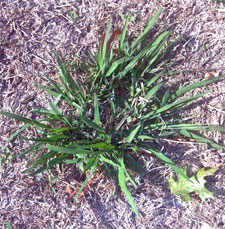
Question: What is the best way to get rid of dallisgrass? It is invading my St. Augustine. I was able to get a photo of it isolated from the turf. B.L., no city given.
Answer: There is no good way, let alone a best way, to eliminate dallisgrass. You’ll either have to spot-treat it with a glyphosate such as the original Roundup or one of its clones, or you’ll have to hand-dig it. Either way, you’re going to disrupt the St. Augustine. I’ve always wondered if spraying it the very first warm days of spring might give you a better chance of seeing and treating it. It greens up a week or two earlier than St. Augustine. That depends, of course, on where you live in Texas. That’s more of an answer for North Texas, where the St. Augustine goes brown in the winter. Sadly, with MSMA gone, the answer is now the same for bermuda turf.
Question: I’ve heard that redtip photinias are dying all over the state from a fungus that has no control. What can I use to replace these if they’re going to die anyway? T.R., Fort Worth.
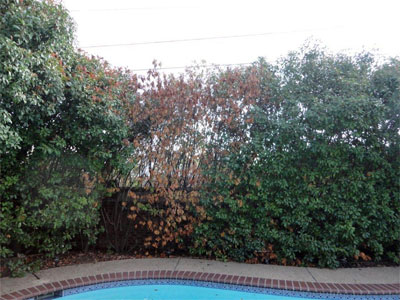
Answer: For redtips that are being killed by Entomosporium fungal leaf spot, I normally recommend Nellie R. Stevens hollies as the replacement screens up to 12 to 15 feet tall. Space them 8 or 9 feet apart if you’re going to let them grow that tall. Honestly, however, this photo looks more like redtips that have gotten too dry over this past summer. If you decide to make the change, you’re going to have to make a real commitment to water the hollies every 3 or 4 days for their first year or two. Of course, that’s more critical during the warmer months.
Question: Why are the leaves of my peace lily turning brown on their tips? L.S., no city given.
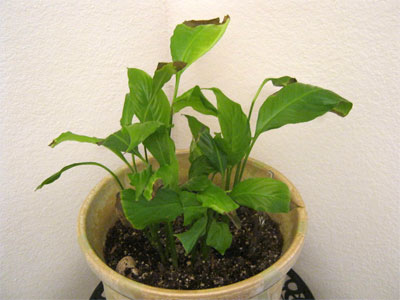
Answer: This is moisture stress. Roots have died in the process. I’ve grown peace lilies for 40 years, and almost all of my plants have a few leaf tips that are browned. In my case, I’ve let the plants wilt at some point during the year, and the scorch is my reward. You can easily enough trim the dead tissue away with sharp scissors. Tailor the leaves to look more natural. Candidly, however, this plant looks like it may be over-potted. The symptoms of over- and under-watering are the same (browned tips). This plant could go either way. Never water it if it’s already moist.
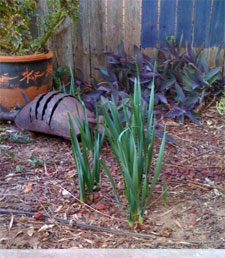
Question: I always thought fall was the time to plant daffodils. I planted these two years ago in the fall, but they’re growing right now. They do not bloom. Others that I plant in early spring do bloom. What gives? B.F., Lubbock.
Answer: Anyone who grows daffodils in Texas will see this happen. They send their leaves up in November and December, then sit patiently waiting for warm spring weather. My bet is that you planted a large-flowering type like King Alfred. These are very compelling in the garden shops, and they’re beautiful their first spring, but they fail to bloom in successive springs. Old timers say they "go all to leaves." Stick with the early-flowering, small-flowering types for best success, and do plant them in the fall.
Question: When and how should I prune my crape myrtle to get it to grow more upright? It leans, as you can see. M.D., Arlington.
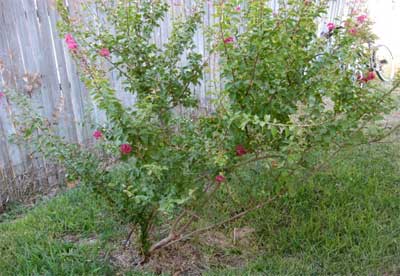
Answer: Pruning of this sort can actually be done just about anytime, but winter is ideal. It appears that you need to remove the one large side branch at the bottom right of the plant flush with the trunk. However, be warned that this plant may be too close to the fence. It may be growing toward the light. (To pacify the plant physiologists who read this, "growing away from the darkness." Plants produce growth hormones that are destroyed by light. The dark sides of the stems, therefore, elongate like a member on the outside of a marching band’s turn has to take longer strides.)
Question: This photo accompanied one of your Saturday columns a few weeks ago in the Fort Worth Star Telegram. Could you please identify the large background tree with the beautiful blue plumes? I’d like to add this to my landscape if it is recommended for my area. No name given. Arlington.

Answer: This is lilac chaste tree (Vitex angnus-castus). It’s an heirloom plant that grows to 10 or 12 feet tall and 12 to 15 feet wide. It blooms in late spring, but it often produces a second and lighter round of flowers in late summer, especially in South Texas. It is quite tolerant of drought and heat, and it should do perfectly for you in Arlington. Full sun only.
Question: I replaced my bermuda with St. Augustine this year, and I like it very much. However, it wouldn’t grow along the walk. Why, and what can I do? R., Southwest Fort Worth.
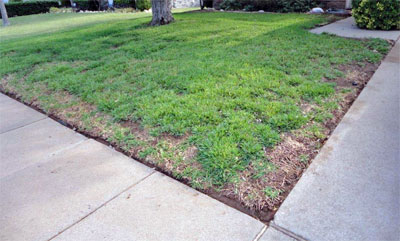
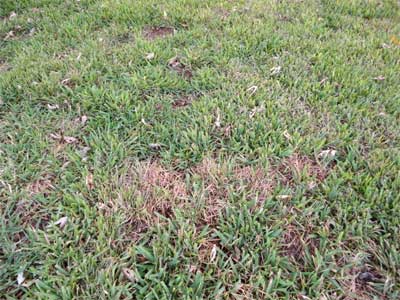
Answer: 2011 was a horrible summer for chinch bugs in St. Augustine. Since they always show up in the hottest, driest part of the lawn, my bet is that they were responsible for this dieback. You’ll see them every summer, usually late June through early September. They’re b-b-sized black insects that live among the St. Augustine runners. You’ll have to part the grass on hands and knees on a hot afternoon to see them. One treatment of Merit insecticide, when the lawn first appears to be remaining dry, even after watering, should take care of them. Confirm that they’re there, however, before you treat.
Question: What kind of weedkiller will control this weed? What is its name? T., no city given.
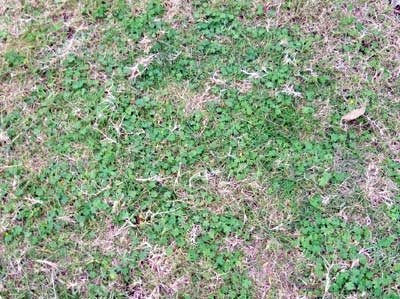
Answer: It looks like ground ivy (Glecoma hederacea). It isn’t critical that we identify it, however. It’s definitely a broadleafed weed, so a broadleafed weedkiller containing 2,4-d would be the product to use. It will be most effective when the weed is growing actively, and it will take the herbicide 15 days to make inroads into its growth. Daytime temperatures must be higher than 70 (without rain) for broadleafed weedkillers to be effective.

